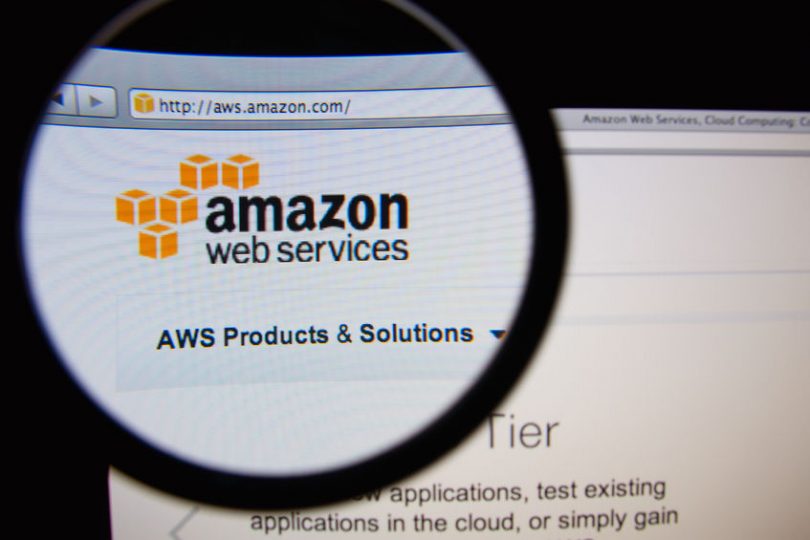Today Amazon announced a new kind of centralized database aimed at being a challenger to permissioned blockchains. The Amazon QLDB database is only available in preview but provides a “transparent, immutable, cryptographically verifiable ledger database service”. Those are some of the features that permissioned blockchains aim to achieve.
Many industries fear the entry of Amazon, especially banking and insurance. But Amazon launching a blockchain challenger is a bolt out of the blue. Particularly because it was a relative laggard in launching blockchain hosting.
In reality, permissioned blockchains are partially centralized and sometimes managed by one technology provider. So Amazon is aiming to get some of the benefits of blockchain without all the costs. Without a blockchain, there’s no redundancy and there is one central database to be targeted to manipulate.
Multiple parties can update the QLDB ledger, and because of the cryptographic verification, it’s clear who has done so. There’s a special log of every database change. The big question is whether this is truly immutable, because immutability is one of the critical blockchain benefits. This could be a challenger for Hyperledger Fabric and Ethereum, but R3’s Corda doesn’t store everything in one place.
Given it’s a centralized database, there’s no need for consensus so it can execute transactions at 2-3 times the speed of “common blockchain frameworks”. More specifics on that would be interesting.
“AWS teams have been using Amazon QLDB for years to maintain a complete, immutable, and append-only journal of data changes. We started out trying to use relational databases to do this, but quickly found they could not scale or deliver the performance we needed to support our most widely-used services,” said Shawn Bice, Vice President, Nonrelational Databases at AWS.
“Earlier this year, when we started talking to customers about what they needed from a blockchain solution, we realized that the Amazon QLDB’s ledger technology met a lot of their requirements. They wanted a centrally-owned ledger that provided an immutable way to log the transactions history of their applications and was transparent to all the parties with whom they were interacting. So, today we’re offering an immutable, transparent, and cryptographically verifiable ledger, based on the same one that AWS teams have been using for years at scale, as a fully managed service.”
AWS has already lined up customers. One is the online ad exchange Smaat which has over 20 billion requests per day.
“All participants in the online advertising and real-time bidding market segments are interested in transparency throughout the entire lifecycle of an online ad auction, from the initial auction, to the winning bid, and ultimately through to the final impression delivery and who it’s actually shown to,” said Ragnar Kruse, CEO, Smaato. “Since we act as a centralized point of trust in this value chain, we’re really excited about Amazon QLDB.
Additionally, government-owned Healthdirect Australia is interested. “Healthdirect Australia operates in a heavily regulated industry, and it is critical that our compliance data is correct and auditable,” said Bruce Haefele, General Manager, Technology, Healthdirect Australia. “With Amazon QLDB we look forward to having a complete and verifiable history of every change in our system, making it simple to audit when and how we arrived at our current state.
Managed Blockchain
Today Amazon also announced the launch of Amazon Managed Blockchain. Usually, to participate in a permissioned blockchain, each node on a permissioned network has to set up the hardware, install software, and configure access and network settings. Scaling systems is a challenge because there’s a need to monitor the network and manage availability. The new fully managed blockchain service aims to address these pain points.
Currently, the service supports Hyperledger Fabric and Ethereum. It allows the network to span multiple AWS accounts and configure software, security and network settings. It uses the AWS Key Management Service, so there’s no need to set up secure key storage. The company claims the network can scale to thousands of applications running millions of transactions.
Perhaps as a nod to the scaling, one feature is a voting API to allow members to poll whether to add or remove members. Given most permissioned networks have formal agreements that’s quite a curious offering, though potentially the voting ability might be included in future governance agreements.
In some ways this product is competing with Azure Workbench though the latter has more extensive features.
The DTCC provides settlement solutions for stock and derivatives markets. “As critical financial market infrastructure, the industry relies on us to provide innovative solutions that reduce risk, increase transparency and evolve with market and regulatory needs,” said Rob Palatnick, Managing Director, Chief Technology Architect, DTCC.
“We believe that blockchain technology represents a generational opportunity to re-imagine post-trade infrastructure. We are pleased to be using Amazon Managed Blockchain to explore possibilities with Hyperledger Fabric, where we can continue to lead industry initiatives around the exploration and adoption of blockchain. Amazon Managed Blockchain automates the deployment of blockchain infrastructure, bringing high availability and durability in a fully managed package, accelerating the adoption of distributed ledger technology.”






